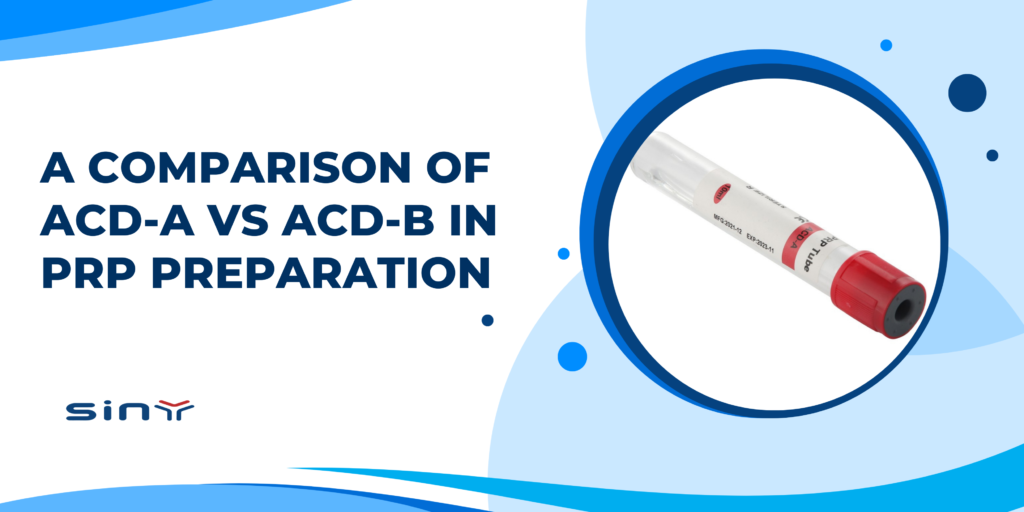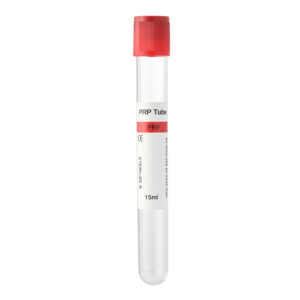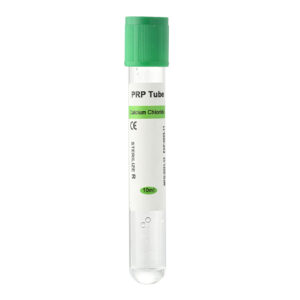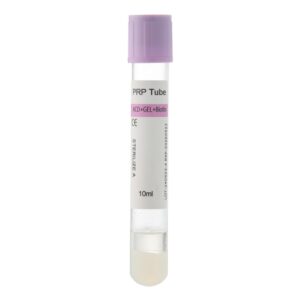Platelet-rich plasma (PRP) captures and concentrates platelets and their growth factors from whole blood. Clinicians use PRP in orthopedics, dermatology, dental implants, and sports injury recovery. An anticoagulant is essential to keep blood from clotting during collection and centrifugation. Acid Citrate Dextrose Solution A (ACD‑A) and Solution B (ACD‑B) rank among the most reliable.
PRP Preparation Steps
- Collect blood: Draw 10–60 mL from the antecubital vein. Avoid quick repeated sticks to prevent premature platelet activation.
- Mixed: Gently invert the tube 3–5 times to spread the solution evenly without triggering platelet clumping.
- Centrifuge: Use either a two‑spin or single‑spin method. A typical two‑spin protocol runs at 150 × g for 10 minutes (to separate red cells), then 400 × g for 10 minutes (to concentrate platelets).
- Extract PRP: Remove the platelet‑poor plasma (PPP) layer. Keep the middle layer of platelet‑rich plasma. Gently mix before use to preserve platelet integrity.
- Activate and apply: Add calcium chloride or thrombin to trigger growth‑factor release. Inject or apply within minutes for best results.
Chemical Composition and Key Properties
ACD‑A contains tri‑sodium citrate, dextrose, and a balanced mix of electrolytes. The added dextrose fuels platelets and white blood cells, helping to preserve their structure and function during centrifugation and storage. With a pH range of 4.9–5.3 and an osmolarity near 310 mOsm/kg, ACD‑A closely aligns with physiological conditions, reducing cell stress. It efficiently chelates calcium ions to stop clotting and can be stored at room temperature for up to 24 hours or refrigerated at 2–8 °C for longer periods.
ACD‑B is composed only of tri‑sodium citrate and electrolytes, without dextrose. Its pH of 4.6–4.8 is slightly more acidic, which in sensitive cases can lead to mild cell irritation. The osmolarity is about 290 mOsm/kg, somewhat below normal blood levels. While its calcium‑binding ability reliably prevents clotting, it offers less metabolic support for cells. The simpler formula also reduces the chance of microbial growth, and ACD‑B remains stable at room temperature for up to 24 hours.
Anticoagulant Action and Blood Cell Effects
- Calcium chelation: Citrate ions bind free calcium, stopping the clotting cascade by blocking thrombin activation.
- Cell support: Dextrose in ACD‑A serves as an energy source for platelets and white blood cells, which lowers damage during processing.
- Centrifuge compatibility: Proper pH and osmolarity reduce cell rupture, increasing platelet yield. Laboratory tests show PRP made with ACD‑A preserves over 95% of platelet structure.
Impact on PRP Quality and Function
- Platelet count and activity:
- ACD‑A: 5–7× platelet enrichment; >90% activity retained.
- ACD‑B: 4–6× enrichment; ~85% activity retained.
- Growth‑factor release:
- PRP from ACD‑A peaks 20–30% higher in PDGF‑AB levels within one hour of activation.
- TGF‑β1 and VEGF also trend higher with ACD‑A.
- White cell and exosome content: Both solutions yield similar white‑cell removal. ACD‑A’s gentler environment raises exosome levels by ~10%, which may support healing.
Clinical and Research Findings
- Orthopedics: A randomized trial (n=60) found ACD‑A PRP reduced bone‑graft healing time by two weeks compared to standard care (p<0.05).
- Dermatology: In a study of 30 patients receiving photorejuvenation plus PRP, the ACD‑B group reported milder redness with equal overall satisfaction (4.5/5).
- Sports Medicine: A tendon‑injury model showed ACD‑A PRP improved ultrasound healing scores by 15% over ACD‑B.
Clinical Recommendations by Application
- Bone repair: Choose ACD‑A to boost biological activity and support bone‑platelet interactions.
- Skin treatments: Use ACD‑B for patients who might feel more sting from acidity; combine with local anesthetic as needed.
- Dental implants: Both work well for immediate application; pick based on cost or handling preference.
- Sports injuries: For on‑the‑go prep, ACD‑B pairs nicely with portable centrifuges.
Handling Protocols and Safety Tips
- Accurate mixing: Keep the 1:9 ratio precise—too much or too little anticoagulant alters PRP quality.
- Avoid overmixing: Gentle inversion prevents premature platelet activation.
- Check pH and osmolarity: If you can, test to confirm they match near‑normal blood values.
- Maintain sterility: Use sterile syringes, tubes, and pipettes throughout.
- Use freshness: Inject or apply PRP within four hours of activation. The peak window falls between 30 minutes and two hours.
Final Thoughts
ACD‑A offers stronger platelet support, higher growth‑factor release, and better repair potential. ACD‑B trades a simpler formula and cost-benefit for slightly lower bioactivity. Match your choice to the clinical need, equipment, and patient comfort. Use a fine-tuned ratio and handling to get the most from your PRP treatments.





